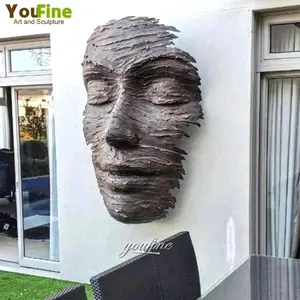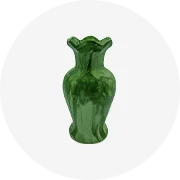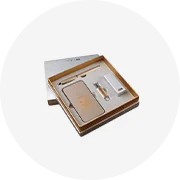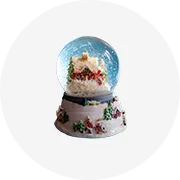
Large Garden Cast Bronze Metal Art Human Face Landscape Sculptures Statue Abstract Modern Bronze 3D Wall Face Sculpture


Modern Nordic Metal Figure Sculpture Poster Print Abstract Wall Art Canvas Painting Love Statue For Bedroom Decor












Abstract wall sculptures, with their myriad forms, colors, and styles, offer a unique way to elevate the aesthetics of any space. These art pieces, born from the avant-garde movements of the early 20th century, have evolved to incorporate a variety of materials and techniques, making them versatile elements in interior design. This guide will delve into the world of abstract wall sculptures, exploring their history, types, and the ways they can be incorporated into different spaces. We will also discuss how to choose, place, light, and maintain these sculptures, and provide real-life examples of their transformative power in residential, commercial, and public spaces.
Abstract art, including abstract wall sculptures, does not aim to represent a visual reality. Instead, it uses shapes, colors, and forms to achieve its effect. The term 'abstract' implies a separation or simplification of something from its original form. Abstract art can be based on an object, figure, or landscape, where forms have been simplified or schematized. It can also use forms, such as geometric shapes, that have no source in an external visual reality. Abstract art is often seen as carrying a moral dimension, standing for virtues such as order, purity, simplicity, and spirituality.
Abstract sculpture, including wall sculptures, emerged as artists distanced from traditional sculpture concepts, seeking a fresh relationship between the object and space. This shift was influenced by avant-garde movements and innovations in 2D productions. The introduction of everyday resources broke away from traditional materials like clay, plaster, marble, or bronze. Abstract sculptures, especially in the form of wall sculptures, started to celebrate original formats and vocations with the birth of Cubism. This new form of art allowed for play with geometrical shapes, surface flattening, and fragmentation.
Abstract wall sculptures can be created in various styles, each with its unique characteristics. Geometric Abstraction, for instance, uses simple geometric forms in a non-illusionistic space, often inspired by Cubism. Neo-plasticism, another style, focuses on basic elements, removing unnecessary parts. Op Art, a branch of Geometric Abstraction, creates optical illusions, playing with color theory and psychology. Each style offers a different aesthetic, allowing artists to express their creativity and viewers to experience diverse visual impacts.
Abstract sculpture, including wall sculptures, employs a variety of techniques and materials. In the early 20th century, sculptors moved towards abstraction, experimenting with shape and proportion. They utilized unconventional methods like industrial manufacturing, plastic moulds, and 3D printing. Modern abstract wall sculptures can range from the precise forms of Concrete Art to the strict geometry of Minimalist sculptures, and even to Kinetic Sculpture that embodies movement and physical forces.
Abstract wall sculptures can express a variety of moods and styles, making them versatile for any interior design. They can serve as a colorful focal point in a room, creating movement and depth. In a monochromatic space, a black-and-white abstract sculpture can make a bold statement. Pairing two similar sculptures can create a balanced and intentional look. Abstract sculptures can also subtly complement the existing colors in a room, or be incorporated into a gallery wall for a cohesive aesthetic.
Choosing the right abstract wall sculpture for your space involves considering the emotional power of the piece. Abstract art focuses on evoking feelings through colors, shapes, lines, and textures, offering a wide range of choices to match your personality and mood. It's important to select a piece that makes you feel happy. The psychological power of colors can also influence your mood, so consider the color themes of the sculpture. Ultimately, the decision should be based on your personal connection with the artwork.
Lighting plays a crucial role in displaying abstract wall sculptures. The light cast upon the artwork can significantly alter its appearance. Spotlights, specifically LED lights with a color rendering index (CRI) of 95 and a color temperature of 4000K, are recommended for lighting wall art. The beam angle also affects the artwork's appearance; a 36-degree beam angle spreads out a softer light, enhancing the sculpture's features. Therefore, the right lighting can bring out the best in your abstract wall sculpture, making it a focal point in your space.
Maintaining and cleaning abstract wall sculptures, especially those made of metal, requires special care. Regular dusting with a dry, soft cloth helps prevent dust accumulation. To remove fingerprints or smudges, which can corrode the art, first dust off any loose grains to avoid scratching. Then, use a diluted spray detailer, available at auto parts stores, to gently wipe off the fingerprints. Avoid using metal cleaner or polish as it may remove the protective clear coat. Remember, a clean and well-maintained sculpture enhances the aesthetics of your space.
Real-life examples of abstract wall sculptures can be found in various homes, showcasing the diversity and transformative power of these art pieces. Whether large or small, these sculptures can fill almost any space, enhancing its aesthetic appeal. The testimonial from a satisfied client in Lincoln, UK, further emphasizes the impact of these sculptures, expressing their happiness with how the pieces fit into their space.
Residential spaces can be greatly enhanced by the addition of abstract wall sculptures. For instance, consider the impact of a large-scale art piece in a small space, setting the tone and commanding attention. A vibrant abstract piece can add color and personality to a minimalist space. Alternatively, a gallery wall can display a collection of abstract sculptures, adding color and personality. Even a functional item like a television can be mounted on the wall, freeing up space and updating the look of your living room or bedroom. The possibilities are endless when it comes to incorporating abstract wall sculptures in residential spaces.
Abstract art prints, particularly for office walls, can significantly enhance the aesthetics of commercial spaces. They provide a sense of style and coherence without being too imposing. These prints can also serve as a source of inspiration, fostering creativity and motivation in the workplace. Furthermore, they are cost-effective compared to original paintings, making them a practical choice for office decor. The best art for office walls aligns with the company's style and personality, fits the color scheme, and is sized appropriately.
Renowned art studios globally are known for creating abstract wall sculptures for public spaces. Their unique art pieces add aesthetic value and elevate the ambiance of the spaces they adorn. They are open to collaborations and eager to hear about your project, indicating their commitment to creating bespoke art pieces that resonate with the specific needs and tastes of their clients.
Abstract wall sculptures, with their rich history and diverse styles, offer a unique way to express personal taste and elevate the aesthetics of any space. Whether it's a residential, commercial, or public space, the right abstract wall sculpture can transform it into a visually appealing and emotionally resonant environment. The choice of sculpture should be guided by personal connection and the mood it evokes. Proper placement, lighting, and maintenance can further enhance the impact of these art pieces. As seen in the case studies, abstract wall sculptures can indeed be transformative, adding color, depth, and personality to any space. In the end, the beauty of abstract wall sculptures lies in their ability to evoke emotions, stimulate thought, and create a distinctive aesthetic experience.